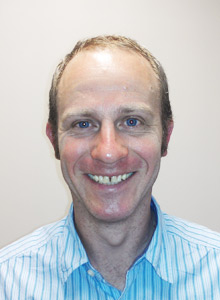-
Rasmussen, B., Maharaj, N., Karan, A., Symons, J., Selvaraj, S., Kumar, R., Kumnick, M. and Sheehan, P. 2021, ‘Evaluating interventions to reduce child marriage in India’, Journal of Global Health Reports, 5, e2021044.
-
Rasmussen, B., Symons, J. and Maharaj, M. and Madonia, K. 2020, ‘Promised, given, traded, sold’, in UNFPA, State of the World Population: Against My Will, New York, pp. 94–113.
-
Rasmussen, B., Symons, J. and Maharaj, N. 2020, ‘Cost of ending child marriage’, in Johns Hopkins University, Avenir Health, Victoria University, Institute of Health, Metrics and Evaluation and UNFPA, Costing the Three Transformative Results, UNFPA, New York, chap. 4.
-
Symons, J., Howard, E., Sweeny, K., Kumnick, M. and Sheehan, P. 2019, ‘Reduced road traffic injuries for young people: A preliminary investment analysis’, Journal of Adolescent Health, 65, S34–S43.
-
Sheehan, P., Sweeny, K., Rasmussen, B., Wils, A., Friedman, H.S., Mahon, J., Patton, G.C., Sawyer, S.M., Howard, E., Symons, J., Stenberg, K., Chalasani, S., Maharaj, N., Reavley, N., Shi, H., Fridman, M., Welsh, A., Nsofor, E. and Laski, L. 2017, ‘Building the foundations for sustainable development: A case for global investment in the capabilities of adolescents’, The Lancet, 390, 1792–1806.
-
Ward, J. and Symons, J. 2017, 'Optimising crop selection for small urban food gardens in dry climates', Horticulturae, 3, 33.
John is an economist whose research includes environmental economics and economic analysis of investments to achieve the Sustainable Development Goals (SDGs) in the health, education and road safety fields. Research partners include the WHO, UNICEF, UNFPA, FIA Foundation and the Murdoch Children's Research Institute.
Current projects are modelling investment in adolescent wellbeing for the Partnership for Maternal, Newborn and Child Health (PMNCH), including the developing toolkits at both the global and national level to allow the models to be used by planners and analysts to produce their own benefit-cost estimates. The results of the investigation will be presented at the WHO/PMNCH Global Forum for Adolescents (1.8 billion Young People for Change) in October 2023.
Recent projects include modelling the benefits of investing in the WHO (WHO), an investment case for interventions into preventing child marriage in low and middle-income countries (UNFPA), rebuilding the education system in Syria (UNICEF), modelling the economic benefits of treating vision loss in collaboration with the Fred Hollows Foundation, and a comprehensive analysis for multiple SDGs, including 75 low and middle-income countries, as well as country specific studies in India and Burundi (UNFPA).
John also worked with the Murdoch Children's Research Institute and FIA Foundation to establish an investment case for road safety interventions to reduce the number of fatalities and serious injuries for young people in Australia, as well as low and middle-income countries. This work focused on active transport and mobility issues specific to young people.
Recent environmental economics projects include research into potential markets for ecosystem goods and services and an IOT approach to increase plastic recycling within the circular economy. Other work has included Green Infrastructure Valuation and Decision making for several councils in the Melbourne area, economic analysis of green roofs and walls, and an economic geography of fire and flood risks for the Bushfire and Natural Hazard Cooperative Research Centre.
Areas of expertise
- Economic modelling
- Education
- Environmental economics
- sustainable development


